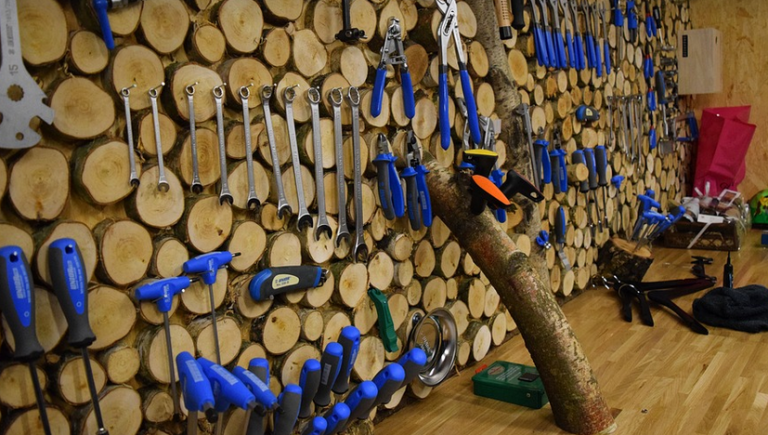
A Quick Guide to Fixing Those Drafty Spots
Let’s face it, siding repairs are a necessary evil in the world of home maintenance. But fear not, fellow homeowners; caulking is your best friend in this pursuit. It’s a surprisingly simple process that can dramatically improve your house’s energy efficiency and curb appeal. Whether you’re dealing with gaps around windows and doors or seeking to repair those pesky cracks on your siding, caulking offers easy solutions. This guide will walk you through the basics of using caulk like a pro, ensuring every application is smooth sailing.
Before we dive into the specifics, let’s talk about why caulk is such a popular sealant choice for exterior repairs. It’s all about its versatility. Caulk can be used to seal gaps and cracks of varying sizes, from tiny hairline fractures to larger openings around windows and doors. Unlike traditional weatherstripping, which relies on pressure seals, caulk creates an airtight barrier that prevents drafts and moisture infiltration. This makes it a crucial element for maintaining your home’s insulation and preventing energy loss.
Choosing the Right Caulk:
The first step in any successful siding repair is selecting the right caulk. It might seem like a simple choice, but there are various types of caulks available, each with its own set of advantages and applications.
- Silicone Caulking:
- Acrylic Caulking:
- EPDM Caulking:
This versatile option offers exceptional durability, flexibility, and weather resistance. It’s perfect for sealing around windows, doors, and siding joints where constant movement or exposure to harsh elements is expected. Its ability to withstand temperature fluctuations makes it a top choice for areas susceptible to extreme temperatures.
A more affordable alternative to silicone caulk, acrylic caulking provides reliable weatherproofing and adhesion power. It’s suitable for sealing gaps around baseboards and other non-structural areas.
This specialized type of caulk offers exceptional durability and resistance to moisture and weathering. It’s often used for sealing cracks in concrete, asphalt, or other porous surfaces. The EPDM-based material tends to hold up well in areas with high levels of UV exposure.
While each caulk type possesses unique features, it’s crucial to select the one that aligns best with your specific repair needs and the location of the gap. Keep these factors in mind when making your selection.
Preparing for Success:
Now that you have the right caulk in hand, let’s talk about preparing the surface for a flawless application. Proper preparation is the foundation for achieving lasting results. A smooth, clean surface will ensure optimal adhesion and prevent unsightly bumps or gaps after the caulk dries.
- Clean your area:
- Remove all loose pieces:
- Tape off unnecessary areas:
Before you even think about applying caulk, make sure the area surrounding the gap is thoroughly cleaned. This involves removing any loose paint, dust particles, dirt, or debris that could interfere with a proper bond.
If you encounter any loose siding, trim, or other material protruding from the gap area, remove it. This will ensure no obstacles hinder the caulk’s penetration during application.
To create a smooth and precise application, carefully tape off surrounding surfaces that you don’t want to get caulk on. This ensures clean edges and prevents messy overruns.
Application Techniques:
Now for the fun part! Let’s delve into the process of applying caulk smoothly for a professional finish.
- Apply a bead of caulk:
- Use steady pressure:
- Smooth out the caulk:
- Allow it to cure:
Start by using a caulking gun and applying a smooth bead of caulk along all sides of the gap. A generous application ensures complete coverage, sealing potential weak points.
As you squeeze the caulk in your caulking gun, maintain consistent pressure to ensure a smooth and even bead without gaps or unevenness. Remember, less is more when it comes to applying caulk; too much can cause messy results.
After applying your initial bead of caulk, use a damp sponge or a dry piece of plastic to smooth the surface and remove any excess material. This step will create a seamless finish that blends in with the surrounding siding.
Once applied, let the caulk sit for at least 24 hours before painting or applying paint around the caulk edges. This will allow the caulk to fully dry and harden, ensuring a lasting seal.
Troubleshooting:
Even with meticulous preparations and application techniques, unexpected challenges may arise during the siding repair process. It’s normal for some minor issues to pop up occasionally. If you encounter any difficulties, don’t panic. Here are a few troubleshooting tips to help you get back on track.
- Gaps appearing after curing:
- Caulk shrinking after drying:
Sometimes, despite your best efforts, gaps might appear after the caulk has dried. This could be due to uneven application or an overly thick layer of caulk. If you notice this, carefully remove any excess caulk with a damp sponge or scraper and reapply a thinner bead of caulk to correct the gap.
In rare cases, due to extreme temperature fluctuations or humidity levels, the caulk might shrink. If you observe this issue, try re-applying a fresh bead of caulk over the affected area and allow it to cure for an additional 24 hours before examining the result.
Beyond Repair: Preventative Measures
While caulking is a fantastic solution for repairing existing gaps and cracks, proactive preventative measures are always advisable. Regularly check your siding’s condition, especially around windows and doors, to prevent future damage. Remember that early detection and timely repairs can save you from bigger problems down the line.
Caulking is more than just a decorative finishing touch; it’s an essential part of maintaining your home’s structural integrity and energy efficiency. With this guide in hand, you’re equipped to tackle any siding repair project with confidence! Now go forth and transform those drafty spots into seamless, weather-resistant zones.



